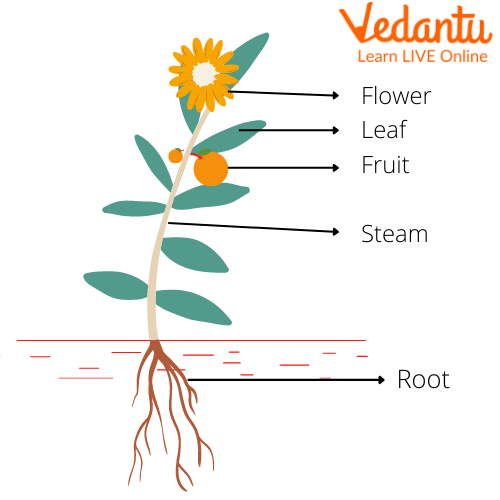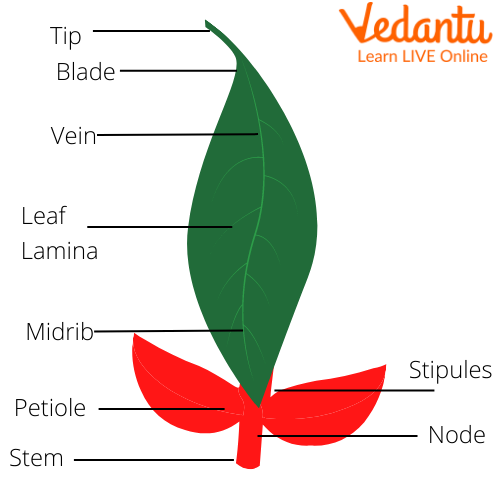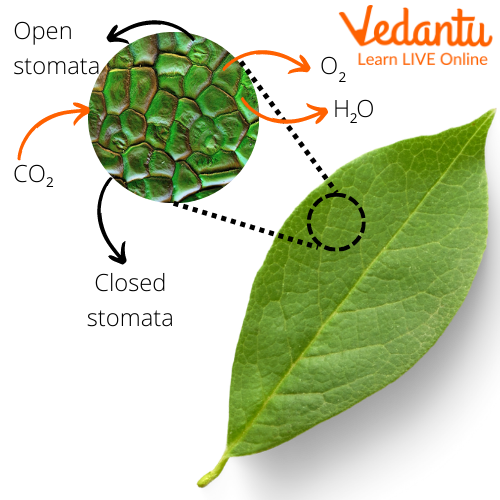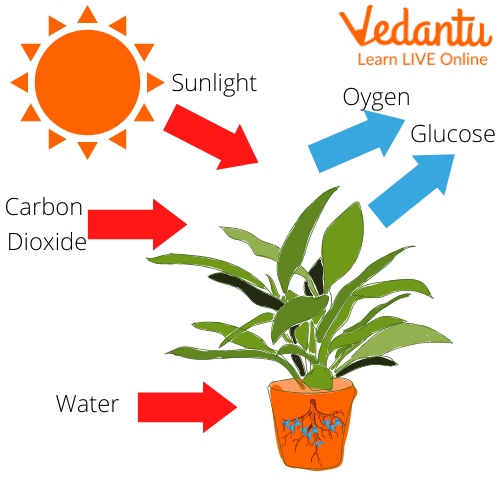




Learn the Parts of Leaves for Kids
Plants are the most important part of our natural ecosystem. They are the only source of harnessing solar energy, utilising as well as storing it. Moreover, they are the main source of transferring this energy to the upper strata of the ecosystem. Although a plant has various parts specialised for carrying out various functions like roots, stems, flowers, etc., but the most important part for the maintenance of the plant's life and directly or indirectly ours too is the leaf.
You must be wondering how! How can a small, flat green structure be this important for everyone? And many more such questions. We will answer all such queries in this article.

Parts of a Plant
A single plant can have a large number of leaves on it. Every different plant has different types of leaves varying in shapes and sizes, but all of them have a similar primary structure. Below we will see the various parts of the leaves. Read ahead to know about leaves and their importance.
Parts of Leaf Structures
A leaf majorly consists of two parts namely- leaf lamina and petiole. Below is the diagram for the parts of leaf:

Parts of a Leaf
The above picture of the leaf indicates the various parts of a leaf for kids with a little visually understandable structure of those parts of leaves.
Leaf Lamina and Petiole
Lamina is also called a leaf blade and the petiole can also be called the leaf stalk.
The broad green part of a leaf is referred to as the lamina. Whereas, the thin cylindrical stalk by which the leaf is attached to the stem is known as “petiole”.
On the lamina part of the leaf, there is a mid-rib or main vein passing through the centre of the lamina. It gives rise to a large number of veins that spread throughout all the parts of the leaf.
Structure of Leaves
Stomata
Present as minute pores on the surface of a leaf, these are called stomata. Their functions are as follows:
(i) They allow gaseous exchange in and out of the leaf.
(ii) They also allow the movement of water vapour.

Stomata on the Leaf Surface
Chlorophyll
The leaves of a plant are usually referred to as the main food factory of the plant body due to the presence of stomata and specialised pigments that help in capturing sunlight and harnessing its energy to make food. This specialised green-coloured pigment is known as chlorophyll.
Functions of Chlorophyll Pigment
Chlorophyll imparts a characteristic green colour to the leaves and sometimes to the stem also.
Chlorophyll can harness light energy and can be used to prepare food in the form of starch for the whole plant body.
Major Functions of the Leaf
Leaves prepare food for the whole plant by the means of photosynthesis.
Leaves help to get rid of excess water from the plant through the phenomenon of transpiration.
Leaves also carry out the process of respiration for the plants.
Photosynthesis
Leaves perform a major function of synthesis of food in the plant by a process called photosynthesis. Photosynthesis is the process in which plants make their own food using solar energy, carbon dioxide, and water.

Photosynthesis
During the Process:
Carbon dioxide is a gas needed in the process of making food by plants and is taken via the leaves from air and water and is carried into leaves from the soil through specialised vascular structures in the stem.
Sunlight provides a major source of energy for making food.
Chlorophyll helps in harnessing the energy from sunlight.
Oxygen gas is produced by the leaves during the process of photosynthesis as a by-product and is released out into the atmosphere.
The food produced by the leaves is in the form of glucose and then it is stored as starch.
Summary
In this article, we saw various parts of the leaves, parts of leaf structure, parts of a leaf, and their functions. The leaves of a plant are very important for the survival of a plant as well as for us humans. This is because plants during the process of photosynthesis release oxygen into the atmosphere, which is very essential for all living creatures; without oxygen our lives are not possible. We should all be thankful to plants and try to conserve them as much as possible.
FAQs on Different Parts of a Leaf and Their Functions
1. Do brown leaves perform photosynthesis?
Photosynthesis is a process in which light energy is harnessed by some pigments present in the leaves and then the energy is used to make food for the plant. Alongside green pigments of chlorophyll, a plant can also have other pigments like carotenoids and xanthophylls which impart various colours to the plant like red, brown, violet, etc. All other pigments also have chlorophyll as their major centre which performs the function of photosynthesis; therefore, we can conclude that brown leaves also have chlorophyll.
2. What are oxygenic and anoxygenic photosynthesis?
As we all know oxygen is released as a by-product into the atmosphere after the process of photosynthesis. If oxygen is released during the phenomenon then the type of photosynthesis is called oxygenic photosynthesis. Whereas if no oxygen is released as a by-product during the process of photosynthesis then the type of photosynthesis is called anoxygenic photosynthesis. During anoxygenic photosynthesis, other gases can be released depending on the source of energy used such as sulphur bacteria releasing SO2 gas into the atmosphere as the result of anoxygenic photosynthesis.
3. What size is a leaf?
Leaves of different plants can have different shapes, sizes, and areas. For example, an oak leaf can be of about 1400 sq. millimetres under one single leaf. The size of a square millimetre is equivalent to the tip of a lead pencil.









